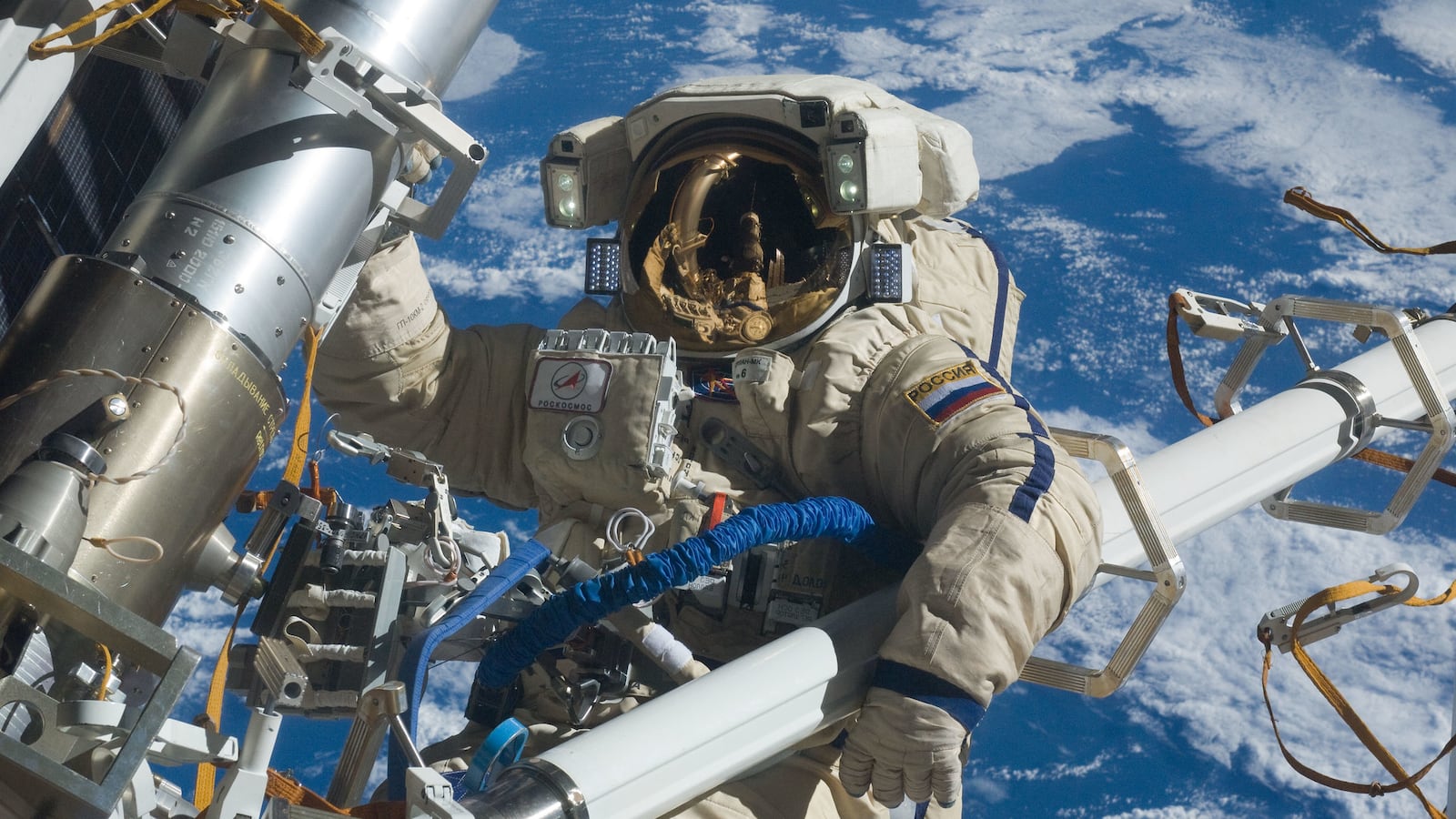As humans look toward the vast unknowns of space to better understand our galactic neighborhood and stake out potential habitats, there’s one big question scientists are asking: How will the human body hold up outside Earth?
For the most part, research from NASA’s trailblazing Twins Study and other investigations show that free-floating thousands of miles above solid ground can cause big changes on immune system function, gene expression, metabolism, and even gut bacteria. Most of these physiological changes, however, reverse themselves once an astronaut is back on Earth. Others can be offset through diet, exercise, and other actions.
But when it comes to the brain, changes may be more permanent for space travelers, as found by one new peer-reviewed study published Friday in Frontiers of Neural Circuits.
In a collaborative effort between the European Space Agency (ESA) and Russian space agency Roscosmos, a team of researchers found that long-duration spaceflight leads to very small but widespread changes in regions of the brain involved in sensorimotor integration—the parts of our brain that help us pick up sensory information and use it to interact with our external environment. These changes were particularly notable in a type of brain tissue called white matter, which acts as a sort of network cable connecting the brain’s computing centers (gray matter) together.
The study, led by physiologist Floris Wuyts of the University of Antwerp, scanned the brains of 12 male Russian cosmonauts using a 3D-modeling technique called fiber tractography. When combined with an MRI, this modeling can give researchers an inside look at the “sort of wiring scheme of the brain,” Wuyts said in a press release.
Between Feb. 2014 and Feb. 2020, cosmonauts who were set to undergo long-duration missions aboard the International Space Station (which, according to NASA, are about six months long) had MRIs taken three months before they launched, and another about 10 days after they returned to Earth. A final MRI was collected around seven months post-mission.
After spaceflight, Wuyts and his team identified tiny “microstructural” changes that occurred not only in the sensorimotor tracts of the brain but also in regions like the cerebellum, which plays a big role in movement and mediating social behavior.
Changes were also seen in white matter tracts connecting the corpus callosum (the communication bridge between our left and right brain hemispheres) and regions involved in language processing and executive function.
On the final MRIs taken seven months later, some microstructural changes reverted to pre-flight conditions—but not all of them. It’s one of the first major pieces of evidence to demonstrate that space can permanently alter the human brain.
Wuyts’ team thinks the space environment (and its microgravity conditions) causes fluid cavities in the brain to dilate, pushing adjacent neural tissue around.
What these findings mean for the long-term health of astronauts and potential space tourists is hard to say. Dr. Jan Stepanek, a physician specializing in space medicine at the Mayo Clinic, told The Daily Beast that just because an anatomical change happens in one part of your brain doesn’t necessarily mean the actual function is changing in an untoward way.
“The sort of big million dollar question that now stands in the room is how much of this is a favorable adaptation and how much of the adaptation—that may occur to deal with an extreme environment—may turn out to be potentially detrimental or maladaptive,” he said.
Stepanek and Jennifer Fogarty, an assistant professor in the Center for Space Medicine at Baylor College of Medicine, do think the new study opens the door for understanding how an altered environment like Earth's orbit or a new planet like Mars can affect our brains, and how those transformations could possibly be tracked and measured with diagnostic imaging.
“It gets complicated [to measure change and adaptation],” Fogarty told The Daily Beast. “But now, understanding that, from a functionality standpoint, we can start to understand why and how the body is going through these mechanistic sorts of investments and changes to [align brain function] with a new environment.”
More work is needed before we can generalize the findings to space travelers of all health statuses, gender, and age (the study only looked at healthy men who were on average in their mid-40s). The next stage of this field of study will be to connect the structural changes of the brain to behavioral and psychological changes—and whether any of these things might be signs of more severe neurological ailments.
“These findings give us additional pieces of the entire puzzle,” said Wuyts. “Since this research is so pioneering, we don’t know how the whole puzzle will look yet. These results contribute to the overall understanding of what’s going on in the brains of space travelers. It’s crucial to maintain this line of research, looking for spaceflight induced changes from different perspectives and different techniques.”
Correction 2/22: The original version of this article misstated Jennifer Fogerty's title and her affiliation. We regret the error.






